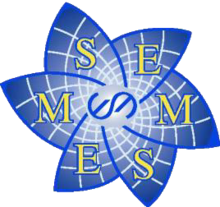The Logician and the Engineer. How George Boole and Claude Shannon Created the Information Age
The logician George Boole (1815-1894) and the (electrical) engineer Claude Shannon (1916-2001) are briefly introduced with two short biographies because, as the subtitle of the book says "they created the information age". Their work was indeed influential for the development of digital computers and the "basics of the evolution of (digital) computers" is what this book is about. Boole's masterpiece was entitled An investigation of the laws of thought (1854) and Shannon's main work was A mathematical theory of communication (1948). The author, being an electrical engineer himself, chooses these scientists as the protagonists of the early information age in view of the main evolution that he sketches in this book: from elementary circuits to (abstract) computing devices.
Seeing this evolution with the eye of an electrical engineer, explains why a great deal of the attention goes initially to Boolean calculus and to the design of logical switching circuits which is how the Boolean algebra can be implemented. Throughout the book, the deeper mathematics and the physics at the level of electrons are avoided. The circuits are merely graphical schemes of which it is known that they can be realized by hardware, but the hardware itself stays in the background.
Some elements of probability theory are introduced because Boole discussed conditional probability, which was done earlier by Bayes, and also Shannon was interested because he needed it to study circuits with noisy (he calls them "crummy") relays. After that chapter, Boole is fading a bit to the background and slightly more advanced topics are discussed like Shannon's information entropy, the capacity of a channel, and error correcting codes. In the latter Shannon has also done something, which makes him a precursor of what Hamming did later. From there on, Nahin takes off to the design of (abstract) computational devices. First the principles of sequential state machines. Even some circuits for their realization are introduced. Then the tale moves on to Turing machines grasping the occasion to discuss countable and uncountable sets. I wonder why a short biography of Alan Turing is not included along with the ones of Boole and Shannon. At the same level as the logician and the engineer, he could have been the programmer or the cryptologist. That might not have done unjust in view of the concept of this book as a whole. The final step taken is a discussion about the physical constraints of what is possible with traditional digital computing. For example how much energy one would have to dissipate as heat when one would be able to simulate a human brain with traditional circuits. That clearly explains the boundaries of what is possible and what is not, even in an ideal situation. The only alternative is to look for a completely different model for our computing devices. A quantum computer might be the alternative we have to look for. So the principle of qubits is explained. If quantum computing is futuristic, then why not think about time-travel. Traditional or quantum computers, can be set to work and after long computationsin the future and after obtaining the result, give us via time-travel the answer right now.
Although the book is technical, it is always easily understandable for anyone (for those who need it, some basic rules for electrical circuits are collected in a short appendix). It is not only understandable but also pleasantly bantering and at occasions even facetious. For example, an epilogue on a fictitious machine trying to translate and simplify the totally unnatural language used in legal texts. Nahin has quite some reputation in writing books about popular mathematics as testified by his 12 previous books. But it is also instructive because along the road, the reader is clearly explained many of the concepts that is probably only vaguely familiar to a broad public like for example public key cryptography, Moore's law, lab-burn, uncertainty principle, bilking paradox, etc. It remains to mention that each chapter ends with a rather extensive section with "Notes and references" that give indeed references of some nuances of the main text.
So let me round up remarking that the title should not give the impression of a story for children as a similarity with Edward Lear's poem The owl and the pussy-cat might suggest. Neither should the title create the expectation that the book is about the live and work of Boole and Shannon. Of course, there is the short biography, and the ideas explained in this book are direct consequences of what these fathers of information theory did. However the contents is about circuits and computing devices, and not a (romanticized or not) extensive biography of the two men.
